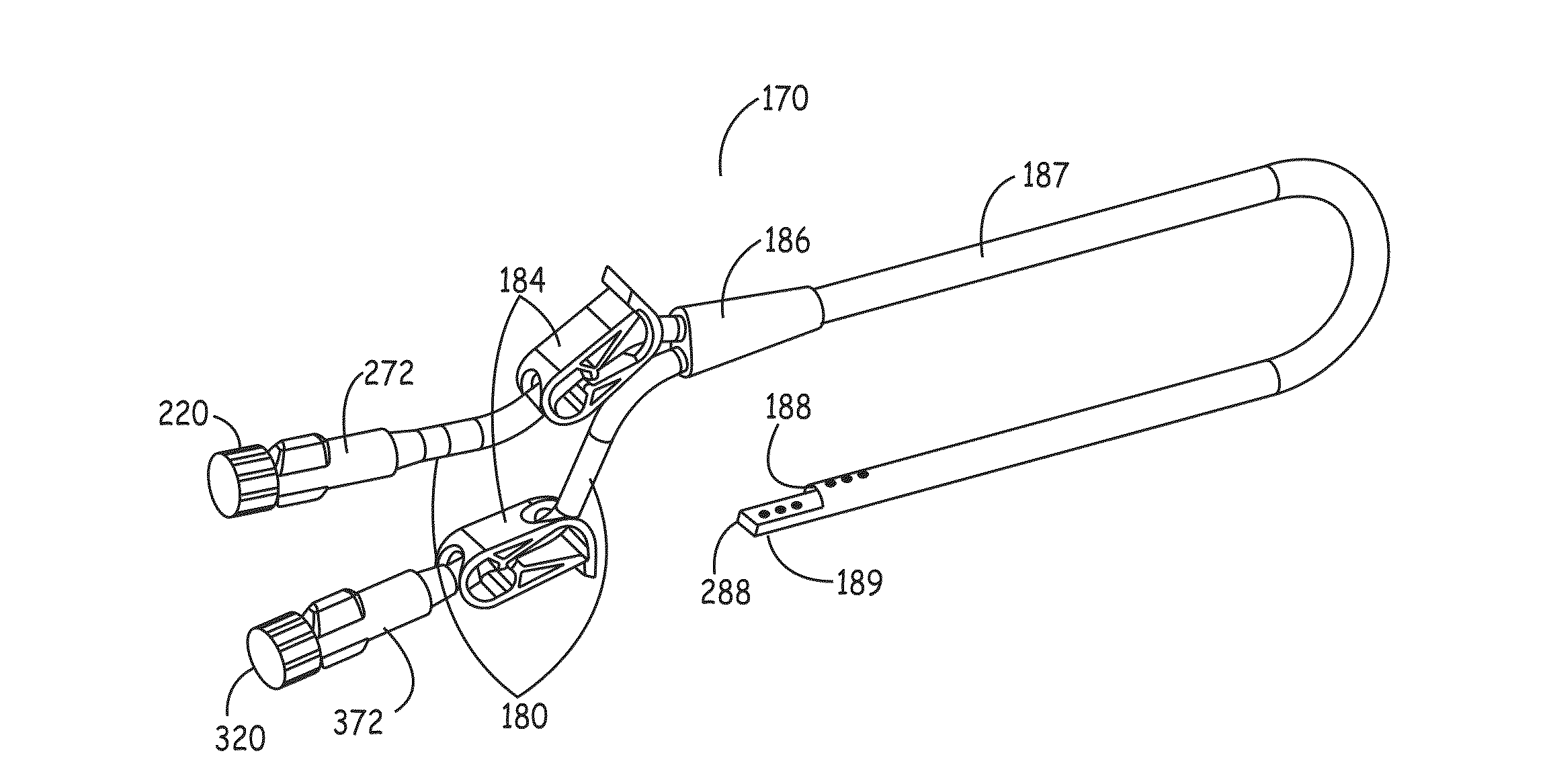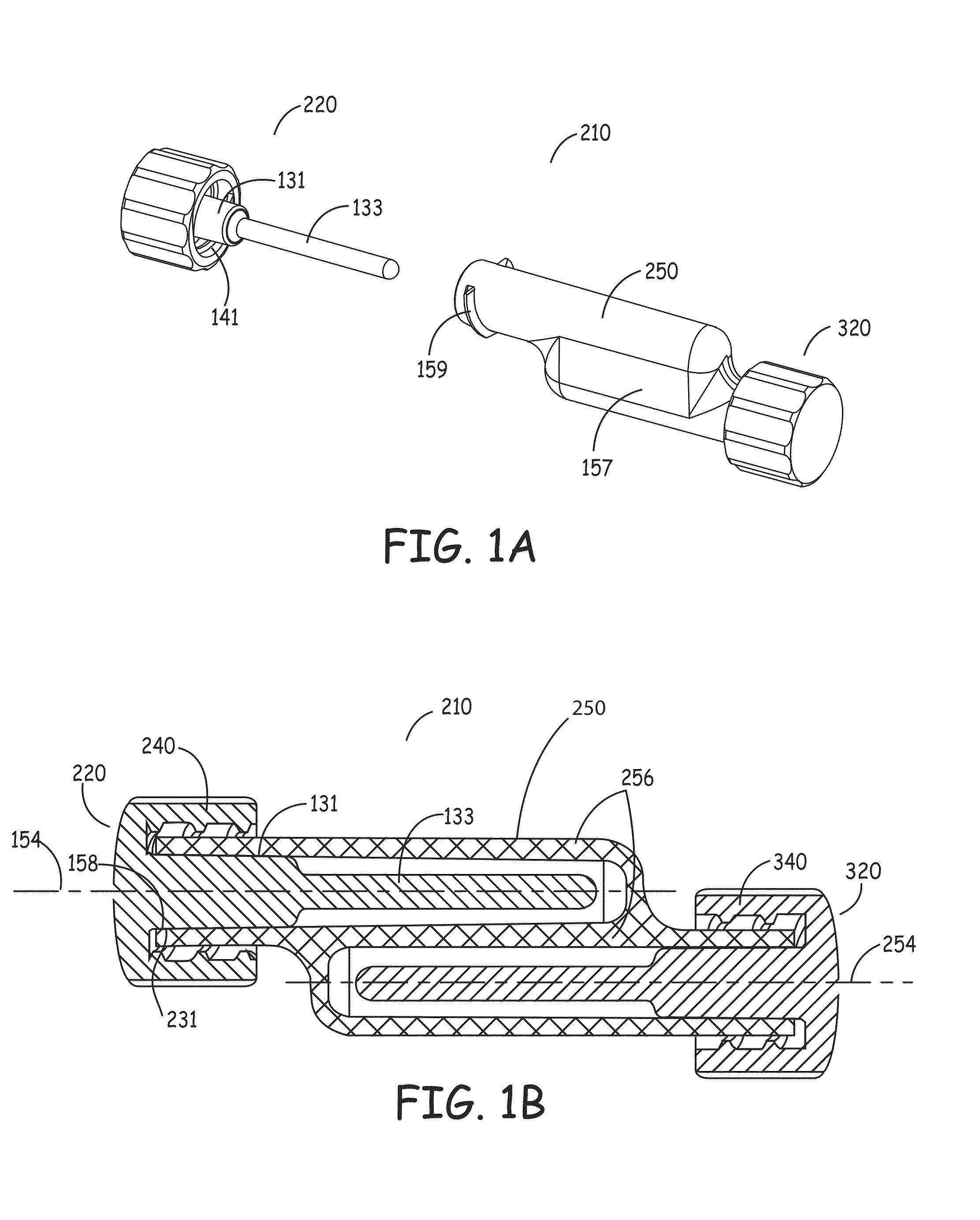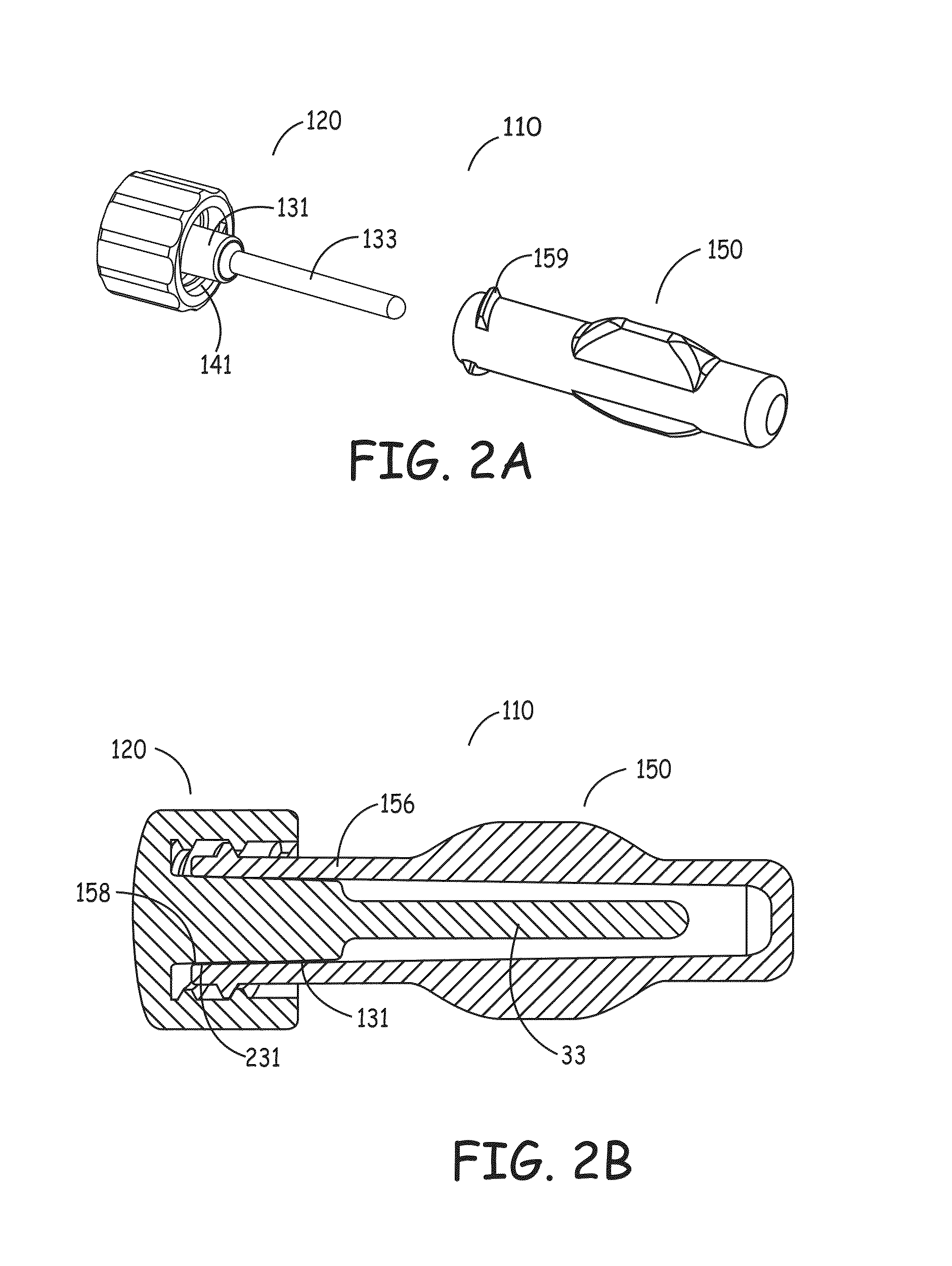Medical device for applying antimicrobial to proximal end of catheter
a catheter and proximal end technology, applied in the field of medical devices, can solve the problems of high mortality rate, large annual healthcare cost associated with treatment, and many patients not being able to surviv
- Summary
- Abstract
- Description
- Claims
- Application Information
AI Technical Summary
Benefits of technology
Problems solved by technology
Method used
Image
Examples
first embodiment
[0082]In one aspect, the present invention includes an organism barrier at the external end of the catheter, also referred to herein as the proximal end of the catheter. This barrier provides a seal to keep organisms from reaching the end face and luer portions of the connector on a catheter. This can be accomplished in a first embodiment by placing an elastomeric flap or gasket (i.e., silicone, neoprene, polyurethane, etc.) that is positioned at the end of the sealing cover's connector or, alternatively, along the inner wall of the sealing cover's locking-ring. The flap preferably makes a fluid tight seal against the outer wall of the catheter's connector, thereby decreasing the likelihood of microbial incursion and preventing microbial growth. In the alternative, a barrier may be formed by placing foam, either closed cell or open cell, that preferably contains an antimicrobial composition, along the inner wall of the sealing cover's retaining ring and / or at the most proximal locat...
experiment 1
[0182
[0183]The objective of this experiment was to assess the antimicrobial effectiveness of Pursuit Vascular's ClearGuard HD device in the most difficult clinically-relevant model. Since the ClearGuard HD is intended to be placed in catheter hubs, but not extend into the extension tubing, the catheter model was chosen to be a female luer connector, extension tube and clamp. The total length of the female luer connector and the extension tubing was manufactured to maximize the length and volume that would be expected to be encountered clinically. Candida albicans (fungus) was chosen as the challenge microorganism, because in previous tests Candida albicans was shown to be the most challenging microorganism for the ClearGuard HD to eradicate. Candida albicans were added to three different lock solutions: heparin-serum, saline-serum, and SDB broth. These solutions represent the most relevant (and challenging) solutions that would be expected clinically. The catheters were filled with ...
experiment 2
[0190
[0191]The objective of this experiment was to assess the relative rate of microorganism contamination in hemodialysis catheter lumens when using the ClearGuard HD versus standard sealing covers in a simulated clinical environment. This experiment was intended to examine the effectiveness of the ClearGuard HD at preventing microorganism contamination of hemodialysis catheter lumens (both proximal and distal to the extension tubing clamp), compared to standard sealing covers in a simulated clinical environment. Growth media was used inside of the catheter instead of the standard lock solution in order to provide an extremely sensitive means of detecting whether any microorganisms entered inside the catheter.
[0192]During clinical use, hemodialysis catheter hubs are routinely exposed to microorganisms because the catheter and hub lies against the patient's skin. All commercially available catheter sealing covers are primarily designed to keep fluid inside the catheter lumen but the...
PUM
| Property | Measurement | Unit |
|---|---|---|
| Length | aaaaa | aaaaa |
| Length | aaaaa | aaaaa |
| Fraction | aaaaa | aaaaa |
Abstract
Description
Claims
Application Information
 Login to View More
Login to View More - R&D
- Intellectual Property
- Life Sciences
- Materials
- Tech Scout
- Unparalleled Data Quality
- Higher Quality Content
- 60% Fewer Hallucinations
Browse by: Latest US Patents, China's latest patents, Technical Efficacy Thesaurus, Application Domain, Technology Topic, Popular Technical Reports.
© 2025 PatSnap. All rights reserved.Legal|Privacy policy|Modern Slavery Act Transparency Statement|Sitemap|About US| Contact US: help@patsnap.com



